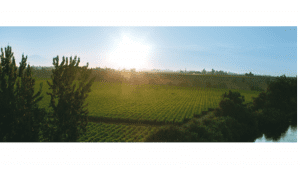New study finds grapes increased resistance to sunburn and reduced markers of UV damage
Fresno, CA – A recent human study published in the Journal of the Academy of Dermatology found that consuming grapes protected against ultraviolet (UV) skin damage.1
Study subjects showed increased resistance to sunburn and a reduction in markers of UV damage at the cellular level.2 Natural components found in grapes known as polyphenols are thought to be responsible for these beneficial effects.
 The study, conducted at the University of Alabama, Birmingham and led by principal investigator Craig Elmets, M.D., investigated the impact of consuming whole grape powder – equivalent to 2.25 cups of grapes per day – for 14 days against photodamage from UV light. Subjects’ skin response to UV light was measured before and after consuming grapes for two weeks by determining the threshold dose of UV radiation that induced visible reddening after 24 hours – the Minimal Erythema Dose (MED).
The study, conducted at the University of Alabama, Birmingham and led by principal investigator Craig Elmets, M.D., investigated the impact of consuming whole grape powder – equivalent to 2.25 cups of grapes per day – for 14 days against photodamage from UV light. Subjects’ skin response to UV light was measured before and after consuming grapes for two weeks by determining the threshold dose of UV radiation that induced visible reddening after 24 hours – the Minimal Erythema Dose (MED).
Grape consumption was protective; more UV exposure was required to cause sunburn following grape consumption, with MED increasing on average by 74.8%.3 Analysis of skin biopsies showed that the grape diet was associated with decreased DNA damage, fewer deaths of skin cells, and a reduction in inflammatory markers that if left unchecked, together can impair skin function and can potentially lead to skin cancer.4
It is estimated that 1 in 5 Americans will develop skin cancer by the age of 70.5 Most skin cancer cases are associated with exposure to UV radiation from the sun: about 90% of nonmelanoma skin cancers and 86% of melanomas, respectively. Additionally, an estimated 90% of skin aging is caused by the sun.
“We saw a significant photoprotective effect with grape consumption and we were able to identify molecular pathways by which that benefit occurs – through repair of DNA damage and downregulation of proinflammatory pathways,” said Dr. Elmets. “Grapes may act as an edible sunscreen, offering an additional layer of protection in addition to topical sunscreen products.”
1 Oak, A.S.W., Shafi, R., Elsayed, M., Bae, S., Saag, L., Wang, C.L., & Elmets, C.A. (2021). Dietary table grape protects against UV photodamage in humans: 1. clinical evaluation. Journal of the American Academy of Dermatology. Doi: https://doi.org/10.1016/j.jaad.2021.01.035.
2 Oak, A.S.W., Shafi, R., Elsayed, M., Mishra, B., Bae, S., Barnes, S., Slominksi, A.T., Wilson, L.S., Athar, M., & Elmets, C.A. (2021). Dietary table grape protects against UV photodamage in humans: 2. molecular evaluation. Journal of the American Academy of Dermatology. Doi: https://doi.org/10.1016/j.jaad.2021.01.036.
3 Oak, A.S.W., Shafi, R., … & Elmets, C.A. (2021). Dietary table grape protects against UV photodamage in humans: 1. clinical evaluation. Journal of the American Academy of Dermatology. Doi: https://doi.org/10.1016/j.jaad.2021.01.035.
4 Oak, A.S.W., Shafi, R., …& Elmets, C.A. (2021). Dietary table grape protects against UV photodamage in humans: 2. molecular evaluation. Journal of the American Academy of Dermatology. Doi: https://doi.org/10.1016/j.jaad.2021.01.036.
5 Skin Cancer Facts and Statistics. Skin Cancer Foundation website https://www.skincancer.org/skin-cancer-information/skin-cancer-facts/ Accessed January 26, 2021.



